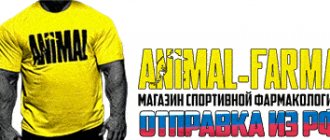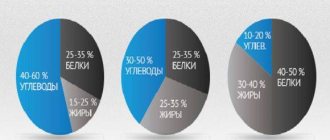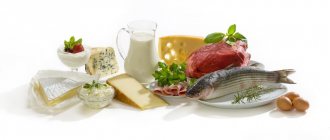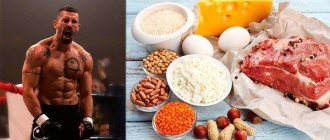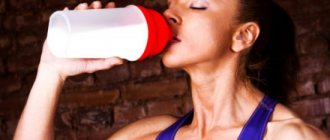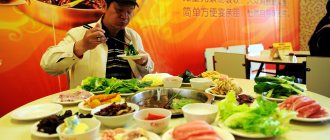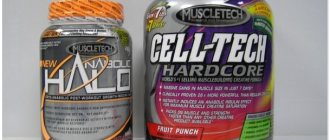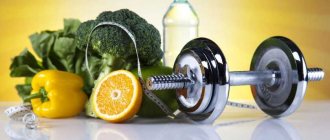The topic of gaining weight is no less relevant than the topic of losing weight. This is noted by all practicing nutritionists. Women strive to gain weight in order to correct some figure defects, get rid of skinnyness and thinness, and gain seductive roundness in the chest and hips. Men want an athletic, muscular look.
Contrary to expectations, the process of gaining weight is more difficult than the process of losing weight, it requires persistence and effort, and takes a long time.
The reason for thinness lies in the original functioning of the body, in its specific metabolism, and correcting such characteristics is very difficult.
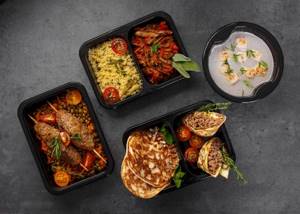
The most complex cases of thinness are destructive processes that occur in those who overdo it with weight loss diets in pursuit of a model appearance.

Critical insufficiency of mass, especially turning into dystrophy, is extremely difficult to correct. This requires the efforts of not only nutritionists, but also doctors.
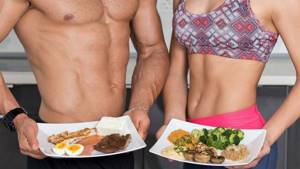
Types of diets for mass gain
Depending on which foods a person prefers, diet options for weight gain will vary. There are three types: protein, carbohydrate and protein-carbohydrate. This also includes the energy and vegetarian diets.
Strict protein diet
Professional athletes adhere to a strict protein diet before upcoming competitions. It is aimed not only at gaining weight, but also at burning fat.
This diet involves a complete rejection of fatty foods and carbohydrates, but with the consumption of foods rich in protein. If a person’s priority is not cutting, but rather gaining weight, then such a diet will not suit him.
Protein-carbohydrate diet
A protein-carbohydrate diet is better suited for building muscle mass than others. The menu is designed in such a way that the body draws the energy it needs from carbohydrate foods and fat reserves, and takes building material for muscles from protein foods. Such diets do not involve strict prohibitions; they are suitable for everyone without exception.
Carbohydrate rotation diet
This diet option is gaining more and more popularity among people involved in sports every day.
It involves following 4 cycles:
- The menu for days 1 and 2 is low-carb. The amount of protein is 3-4 g/kg, carbohydrates - 1-1.5 g/kg.
- Menu 3 days: carbohydrates – 5-6 g/kg body weight, proteins – 1-1.5 g/kg body weight.
- Menu 4 days: proteins 2-2.5 g/kg, carbohydrates – 2-3 g/kg.
In the first days of the diet, the body uses up glycogen reserves and fat deposits. Muscles do not burn, since sufficient amounts of protein are supplied with food. When the second day comes to an end, the body begins to experience stress, as it receives a very limited amount of carbohydrates, so it begins to burn fat deposits more slowly, slowing down metabolic processes.
To speed up metabolism again, during the third day a person eats a sufficient amount of carbohydrate food. This misleads the body, and it continues to consume fat, accumulating glycogen.
advertising is not displayed
The goal of the last day is to replenish glycogen reserves and prepare the body for a new diet cycle.
Vegetarian diet
Eating plant foods allows you to build muscle mass no worse than eating animal products. More protein-rich foods (nuts, grains, legumes, seeds) are introduced into the menu. The diet is supplemented with brewer's yeast and vitamin and mineral complexes. You need to eat often, but in small portions. To prepare dishes, you should use as many different products as possible. To prevent muscles from burning and gaining weight, you should eat food at least 8 times a day. In this case, 4 approaches to the table are basic, and another 4 approaches will be additional.
Energy diet
The Energy Diet from NL International is a nutrition system popular among athletes. The company produces products not only for gaining muscle mass, but also for losing weight.
Energydiet products are food supplements that must be consumed according to a specific schedule. It is compiled depending on the goal that a person pursues. It should be noted that the Energydiet course requires a very impressive financial investment. As for the effect, it can be achieved with the help of ordinary food products, but with a well-designed menu.
A thorough approach is the key to success
To increase muscle mass, you need to train a lot and think over a nutritional schedule for yourself to gain muscle mass. This is the only way to achieve a decent result. Typically, athletes are attracted by the opportunity to get visible results in a short time. Some beginners spend almost the whole day in the gym, forgetting that the actual increase in volume occurs not during class, but during the rest period after. In order for recovery and growth to proceed normally, you need to give the body the necessary nutrients. You can’t eat everything in a row - it will be harmful. You need to know what is best to eat before training and what to eat after. If necessary, the diet is supplemented with supplements.
About 70% of the diet is formed by high-calorie foods. Muscles grow larger if the energy received from food is greater than the energy expended. Fast carbohydrates are contraindicated for athletes; it is better to avoid them altogether. Many fatty foods cannot be eaten, while others are allowed only in small quantities. The emphasis is on foods with a low glycemic index. The best fats are vegetable ones. It is important to drink a lot as soon as you feel like you want water. Most of the daily diet should be consumed before five in the evening. It is prohibited to exercise on an empty stomach. After class you also need to eat. To make it enjoyable to practice, they usually eat a couple of hours before the start of sports practice. After its completion, eat within the next hour and a half.
Sample menu for gaining weight for a week
To build muscle mass, athletes should regularly perform strength training and eat healthy foods. The most comfortable option for girls is to create a nutrition program (taking into account the recommended calorie content) for quick weight gain for 3-7-10 days at once. For example:
| Breakfast #1 | Breakfast No. 2 | Snack | Dinner | Snack | Afternoon snack | Snack | Dinner |
| Monday | |||||||
| 5 quail eggs, a glass of milk, a spoonful of honey, a pear, whole grain toast | sandwich with sprat (on rye bread), tea | melon pieces, water | meatball soup, fruit salad | cottage cheese casserole, apple juice | noodles with mushroom sauce, water | glass of Varents | cottage cheese |
| Tuesday | |||||||
| spelled and pumpkin porridge (with cream), dried fruits, black tea | glass of fermented baked milk | nuts with honey and dried fruits, coffee | chicken and rice soup, vegetable salad | dolma, green tea | fish julienne, tomato juice | a glass of milk | 3-4 slices of cheese |
| Wednesday | |||||||
| milk soup with durum wheat pasta, apple, coffee with sugar | whole grain crackers with onions and tomatoes, carrot juice | natural marshmallows, black tea | ukha, jelly | potato casserole, cocoa | spaghetti with chicken sauce, green tea | cottage cheese with sour cream | glass of kefir |
| Thursday | |||||||
| 2 egg omelet, cocoa with milk, sandwich with pollock caviar (on whole grain bread) | glass of kefir | jelly | beef soup with pearl barley, water | ravioli with sour cream, green tea | chicken jelly, black tea | glass of cream | Greek salad |
| Friday | |||||||
| Guryev porridge, citrus fruit mix salad, green tea | nut butter sandwich, water | natural marshmallow, coffee | turkey soup | chicken cutlet with sweet potato puree, black tea | lasagna with bolognese, water | glass of matsoni | soya beans |
| Saturday | |||||||
| jacket potatoes with vegetable oil and salted herring, vegetable salad, coffee with sugar | glass of curdled milk | meringue, green tea | chicken broth with breadcrumbs | shrimp with grilled vegetables, water | Veal soufflé with brown rice, black tea | 2-3 slices of cheese | mushroom stew |
| Sunday | |||||||
| buckwheat porridge with kefir, mixture of dried fruits and nuts, jelly | sandwich with hummus, black tea with honey | fresh fruit salad with yogurt, water | pea soup with rabbit | whole grain toast sandwich with liver pate and egg, green tea | cannelloni with turkey, water | glass of katyk | bean stew |
Sports nutrition for a diet to gain muscle mass
Sports nutrition requires a person to strictly adhere to time limits and consume specific products, which is not always possible due to various circumstances. So, it is quite problematic for a working person to eat a variety of dishes 6 times a day. Therefore, athletes come to the aid of supplements that are designed taking into account their goals.
Such additives include:
- Gainers.
They are used to “get” the required amount of calories, as well as to ensure that protein is absorbed by the body more quickly. Gainers are drunk an hour before training so that the calories from them do not begin to be stored as fat. You can also use them after classes.
- Protein based powders.
These powders are protein sources that you mix into a mass gainer and drink before your workouts.
- Creatine
, which helps retain moisture in the muscles. Drink it before the upcoming workout, 40 minutes before it starts.
- Glutamine.
Glutamine is an amino acid found in muscles. The body produces it on its own, but athletes take it as a supplement.
Glutamine is taken before bed to achieve the following goals:
- Reduce protein costs;
- Reduce muscle pain;
- Activate immunity;
- Stimulate the production of growth hormone;
- Break down fats faster;
- Increase the amount of glycogen in the body;
- Prevent the toxic effects of ammonia on the body.
- BCAA group.
This abbreviation contains three amino acids: valine, leucine and isoleucine.
Goals that can be achieved by taking BCAAs:
- Reducing the harm that catabolism causes to the body (prevents the growth of muscle mass);
- These amino acids are essential for protein production;
- BCAAs are an additional source of energy for the body.
- Omega-3.
The purpose of taking polyunsaturated fatty acids:
If a person trains intensively, then he needs 4.5 times more glutamine. Indeed, during the growth of muscle mass in the blood, the level of glutamine drops by 18%.
An athlete consumes 5-7 g of the supplement per kg of weight per day. In adolescence, the dosage of 3-4 g per kg of weight should not be exceeded. There are also natural foods that contain glutamine - eggs, fish, beef, legumes, cabbage, parsley and spinach. You can also prepare yourself a sports cocktail, for which 10 g of the additive is diluted in 250 ml of water. Drink this drink in the morning on an empty stomach, after exercise and before a night's rest.
The more intensely a person trains, the more he needs these amino acids. If these reserves are not replenished, the body will begin to burn muscle tissue.
There are foods that are natural sources of BCAAs - peanuts, tuna, eggs, turkey and chicken, beef and salmon. If an athlete needs BCAAs, then the supplement is introduced into the diet before training and immediately after its completion. You can combine BCAA with gainer, protein and keratin.
- Improving brain function;
- Improved blood supply;
- Decreased appetite;
- Normalization of metabolic processes;
- Preventing muscle burning;
- Boosting the immune system;
- Prevention of heart and vascular diseases.
Foods that contain Omega-3 include: tuna, salmon, mackerel, halibut, herring, trout, flaxseed, oat germ, beans and walnuts. Daily intake of Omega-3 should be equal to 2-3 g per kg of weight. These healthy fats can also be taken in capsules as a food supplement, 2-6 g per day.
Diet
In many ways, the effectiveness of proper nutrition for gaining muscle mass is determined by the mode of food absorption. An athlete should eat five or six times a day. They eat a relatively small portion of food at one time. It is forbidden to fast, since such a sensation indicates the fact that the body has used up the previously received nutrition and extracted all possible energy from it. As soon as this happens, the breakdown of muscle tissue begins.

When should you think about gaining weight? Causes of underweight in girls
In medicine, a fairly accurate indicator of the need to gain or lose weight in a person has been developed. This is the body mass index, which is calculated by the formula:
BMI = body weight (kg) / height (m) 2.
The norm is 18.5 – 25, respectively, everything below it is underweight, everything above it is pre-obesity and obesity.
If a girl is underweight, she first needs to determine the cause. Lack of body weight can be caused by both the constitution and various diseases of the endocrine and digestive systems, allergies, malignant processes, and helminthic infestations. The latter is especially true for lovers of sushi and rolls with raw fish or rare steaks. When, in addition to thinness, a girl’s menstruation suddenly disappears, she urgently needs to be examined by a gynecologist.
If no pathological processes are detected in the body, we can conclude that lack of weight is only a feature of the structure of the body. But contrary to the constitution, even thin and “bony” young ladies are capable of acquiring appetizing feminine forms, you just need to make an effort.
Thinking through the little things
If a person is practicing mass nutrition for the first time and has not done sports before, at first he will feel an increased appetite. Nutrients are absorbed particularly efficiently at first. In order for mass gain to be truly good, you need to force all muscle groups of the body to work. To do this, they practice sets of exercises. It is advisable to work on these with a trainer in order to take into account the characteristics of the body.
When you start eating according to a new program, it is wise to make a grocery list in advance and go to the store with it. They buy everything they need for the first week. In the morning they draw up a menu for the day and immediately prepare everything necessary for that day. This makes it easier to distribute food into portions; you don’t have to supplement the menu with high-calorie foods in the evening.
Don't expect instant muscle gain while keeping the rest of your body in perfect fat-free condition. The process of weight gain occurs individually for each person. Different people need time differently. It is advisable to gradually increase the caloric content of the diet and the volume of portions consumed. All nutrition programs for gaining weight require a thorough approach without undue haste. When gaining weight, you need to monitor the body’s reaction, noting all the features in order to adjust the program in time if the need arises.

Permitted and prohibited products
Foods that should not be eaten during the diet:
- Fried meat, sausage, ham, frankfurters.
- Products that contain flavorings, preservatives, flavor enhancers and other chemicals.
- Butter, margarine, spread.
- Salo.
- Any confectionery and baked goods.
- Pickles, marinades, products that have undergone the smoking process.
Protein products
Protein foods that can be eaten during the diet:
- Dietary meats. This kind of meat is the best source of protein. Professional bodybuilders eat two servings of meat of at least 150 g each day.
- Chicken and turkey fillets can replace beef and lamb, as they contain a very small percentage of fat.
- Milk. Fat from milk is well absorbed by the body and is not stored “in reserve.”
- Fermented milk drinks.
- Eggs. Athletes seeking to build muscle mass eat at least 10 eggs daily. They refuse the yolk.
- Cottage cheese, which is a source of protein and beneficial microelements.
- Fatty fish, such as salmon. These products are sources of polyunsaturated fatty acids, which are necessary for the normal functioning of the body.
- Roasted and raw sunflower seeds.
- Buckwheat grain.
- Fresh and canned tuna.
- Lentils.
Carbohydrate foods
Products - sources of carbohydrates that are allowed to be eaten during the diet:
- Brown rice.
- Fruits other than grapes, bananas and pears.
- Garlic.
- Vegetables, including potatoes.
- Cereals.
- Bread.
- Greenery.
- Pasta made from flour obtained from durum wheat.
Fats
Products - sources of fats:
- Nuts: almonds, cashews, hazelnuts, walnuts and Brazil nuts.
- Fatty fish.
- Apple marshmallow.
What foods should you include in your diet?
It is not enough to create a high-calorie menu; it must include healthy foods that are well absorbed by the body. And don’t forget about the correct proportion of nutrients.
High carbohydrate foods:
Black bread
- Porridge.
- Noodles.
- Cereals.
- Mushrooms.
- Potato.
- Pasta.
- Hazelnuts and walnuts.
- Apricot seeds.
- Muesli.
High fat foods:
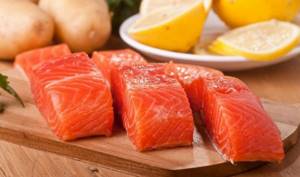
- Fish (salmon, sardines, anchovies).
- Butter.
- Walnuts.
- Sour cream.
- Cheeses.
- Melted butter.
- Cream.
High protein foods:
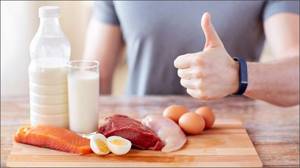
- Eggs.
- Boiled and fried fish.
- Yogurt and cottage cheese.
- Kefir.
- Peas, beans, beans.
- Beef.
- Mutton.
How much protein should you consume and from what foods?
Recent research has shown that increasing the amount of protein in your diet does not lead to additional muscle gain. This approach is appropriate in the diet of a girl who is losing weight.
The daily norm for women based on weight is:
- 60 kg – 155 g;
- 70 kg – 165 g;
- 80 kg – 175 g.
The most suitable protein-rich foods to include in your diet include:
- lean beef, which, according to a number of scientists, allows you to increase muscle mass and burn fat at the same time;
- chicken eggs, which also contain vitamin D;
- cottage cheese, consumed before bedtime;
- herring, which will also saturate the body with fats and creatine;
- tuna, the purest protein of all seafood;
- turkey, the most dietary meat;
- mackerel, rich in Omega-3 and vitamin C.
It is recommended to choose almonds for a snack.
Nutrients
They determine proper nutrition for gaining muscle mass by analyzing the need for nutrients and balancing the menu according to these components. To grow muscles faster, 25-35% of your diet should be protein, half to 60% should be carbohydrates, and the remaining 10-15% should be fat. One gram of protein or carbohydrate provides the body with 4 calories, one gram of lipids provides the body with 9 calories. Let's say that to increase muscle mass, a particular athlete needs to consume 3050 calories daily. To do this, the body must receive 229 g of protein, 419 g of carbohydrates and 51 g of lipids from food. Knowing these indicators for yourself, you can easily create an effective nutrition plan.
The Best Foods for Gaining Muscle
There are foods that will help you gain muscle mass without gaining excess fat. They must be included in the daily diet.
Sunflower seeds
100 g of seeds contain 375 kcal. But they are an excellent source of protein and vitamin E, which is essential for gaining muscle mass as it speeds up tissue repair after exercise.
Hulled seeds can be added to salads or used as a snack. You can eat them either raw or fried, dried in a frying pan or in the oven.
Mackerel
Its calorie content is 262 kcal per 100 g. Fish contains a lot of omega-3 fatty acids, which are necessary for normal digestion and the breakdown of proteins, as well as vitamin C. It plays an important role in the production of collagen, necessary for muscles.
Kiwi
The energy value is only 61 kcal per 100 g. And at the same time, this fruit is one of the record holders for vitamin C content.
Beef
Calorie content - 250 kcal per 100 g. This type of meat is a champion in amino acid content, although from a dietary point of view it is not nearly as healthy as turkey meat.
Buckwheat
It contains only 110 kcal per 100 g in its finished form. At the same time, it contains significantly more amino acids than other cereals, and these are the ones needed for building muscles. You can include it in the menu twice a week.
Chocolate milk
Calorie content - 83 kcal per 100 g. It contains many vitamins and calcium necessary for bones. An excellent product for building muscle without harming your health.
Ginger root
Contains 80 calories per 100 g
It is an excellent pain reliever, which is important for muscles after training. Strengthens the immune system and has a beneficial effect on digestion
A pineapple
Contains only 50 kcal per 100 g. Pineapple contains bromelain. It improves the digestion of protein foods. Therefore, the fruit is good as a dessert after fish or meat. Bromelain eliminates muscle pain after exercise.
Coffee
It contains from 0 to 70 kcal, if you do not add sugar to the drink. Caffeine helps increase the duration of your workouts. An alternative solution could be green tea.
Vegetables
Various vegetables are good for building muscles. Doctors recommend eating fresh cucumbers, without peeling them, since it contains elements that are beneficial for muscle tissue.
It’s easier to create a menu for muscles if you have a table at hand that shows the protein content:
| Product | Protein content, g | Beneficial features |
| Lentils | 23-26 | Contains plenty of vitamin B, iron and zinc, which are essential for muscle growth |
| Tuna | 22,7 | Contains phosphorus, many useful amino acids |
| Turkey | 21,6 | One of the champions in protein content. Contains minimal fat and almost the same amount of phosphorus as fish |
| Sunflower seeds | 20,7 | Contains vitamin E |
| Almond | 18,6 | Contains vitamin E, helps to recover faster after workouts |
| Herring | 17,7 | Contains amino acids. But should not be consumed with too much salt |
| Chicken eggs | Average 13 g | The most fully digestible protein of all. Contains vitamin D, essential for ligaments |
In sports nutrition, a supplement often used is spirulina, a green algae that contains up to 65% protein. It contains beta-carotene, which helps restore muscles after exercise.
The protein content is an average figure, it all depends on the quality of the products, but on this basis it is already possible to develop a diet, including the use of sports dietary supplements. Their protein content always meets the standards.
Time and rules
Proper nutrition for gaining muscle mass for a man is not only a set of products, but also temporary standards. If a person works out intensively in the gym, immediately after completion the anabolic window begins, that is, a lack of carbohydrates and proteins in the body. To quickly compensate for the phenomenon, you need to eat something to replenish the balance. The duration of the window is from half an hour to one and a half hours. To prevent the destruction of muscle tissue, athletes eat immediately after exercise. Some trainers believe that you should eat only after an hour, since at this time the body is still burning accumulated fat. According to some experienced athletes, after training you should eat only proteins - they are good for muscles. Others are convinced that the emphasis should be on carbohydrates, which better restore the body's energy reserves. Some trainers believe that proteins and carbohydrates are allowed equally, because both types are necessary for muscle growth. The main rule is to eat everything during the anabolic window.
All of the above opinions have a certain evidence base. All of them allow you to increase muscle volume. However, the effectiveness of eating after exercise is largely determined by whether the person ate before exercise. If not, you need to eat something immediately after your workout. If a person trained well-fed, there is no such rush.
Diet for weight gain for a girl. Sample menu for the week
With a fairly large list of permitted food products, it is not at all difficult to create a diet for the week, and a varied one that you won’t get tired of.
Sample menu for a week with 6 meals:
| Day of the week | 1 | 2 | 3 | 4 | 5 | 6 |
| Mon. | Oatmeal, apple and some nuts | Egg, definitely hard-boiled, rye bread and smoothie | Couscous, piece of beef steak, freshly squeezed juice | Rice, apple and some milk | Boiled potatoes, chicken | Cottage cheese and baked apple |
| Tue | Buckwheat porridge, orange, coffee | Baked zucchini, bread | Pasta and vegetables | Watercress, chicken | Pancakes with cottage cheese, kefir | Kefir and whole grain bread |
| Wed. | Chicken fillet, vegetables, cocoa | Cashew and dried apricots | Pea soup, steak | Oatmeal, smoothie | Buckwheat porridge and herring | Natural yoghurt and 2 kiwis |
| Thurs. | Baked mackerel, fresh vegetable salad | Cottage cheese, milk | Steamed pike perch, tomatoes | Sesame halva, kefir | Lentils, turkey | Veal goulash, oatmeal |
| Fri. | Turkey fillet and tomatoes, tea | Asparagus, bread | Tuna and vegetables | Omelette, salad | Pasta and baked blues | Oatmeal and seasonal vegetables |
| Sat. | Beef and cucumbers, juice | Wheat porridge, vinaigrette | Eggs, sweet peppers | Pollock and rice | Barley porridge, beef goulash | Smoothie, pear |
| Sun. | Tuna and vegetable salad | Rice porridge, milk | Boiled potatoes, fillet | Chicken breast, banana | Green beans, hake | Pike soup, egg |
But always remember about the drinking regime. No proper nutrition can be considered as such if the body does not receive enough water per day.
Sample menu by day
A menu for a week with five meals a day might look like this:
Monday
- 7.00 Millet porridge with pumpkin, nuts, honey. Cottage cheese (420g, 534 kcal B-28g, Zh-12g, U-77g).
- 11.00 Casserole with raisins and walnuts. Korean-style carrots with chuka (150/20/150 320g, 578 kcal B-16.3g, Zh-35.2g, U-49.1).
- 14.00 Bolognese pasta and Korean-style carrots with chuka (100/150/150 400g, 634 kcal B-20.7g, Zh-32g, U-65.8g).
- 17.00 Cheesecakes with cherries, yogurt, cream sauce (190g, 465 kcal B-12.7g, Zh-18.3g, U-64.2g).
- 20.00 Steamed chicken cutlets with buckwheat, broccoli and yogurt (270g, 367 kcal B-31.8g, F-11.4g, U-34.2g).
Tuesday
- 7.00 Pumpkin pancakes with apple sauce (240g, 500 kcal B-7.4g, F-22.4g, U-67.4g).
- 11.00 Chocolate muffins with peanut butter (220g, 501 kcal B-26.7g, Zh-17g, U-59.5g).
- 14.00 Baked minced turkey with sun-dried tomatoes and jasmine rice (270g, 502 kcal B-20.3g, F-18.4g, U-63.7g).
- 17.00 Chicken breast salad, cottage cheese (320g, 438 kcal B-33.9g, F-22.8g, U-21.6g).
- 20.00 Vitamin salad with pumpkin seeds and Green sauce (170g, 354 kcal B-2.6g, F-32.7g, U-12g).
Wednesday
- 7.00 White omelette, beans, tomatoes. Rice pudding with almonds (270g, 562 kcal B-35.5g, F-29.4g, U-38.9g).
- 11.00 Sandwich with chicken breast, baked pepper and Korean carrots (320g, 605 kcal B-36.4g, F-31.1g, U-44.5g).
- 14.00 Turkey lula kebab with baked potatoes (290g, 574 kcal B-31.8g, F-28.7g, U-45.4g).
- 17.00 Salad with seafood, creamy mustard sauce and protein omelette with herbs (320g, 478 kcal B-24.4g, F-32.4g, U-19.1g).
- 20.00 Grilled chicken breast with broccoli and yogurt with herbs (310g, 327 kcal B-31.9g, F-17.1g, U-12.7g).
Thursday
- 7.00 Pancakes with minced chicken (190g, 452 kcal B-27.8g, F-25.6g, U-58.6g).
- 11.00 Cheesecakes with cherries, Omelette with chicken breast and creamy mustard sauce (360g, 553 kcal B-53.3g, F-29.8g, U-16.8g).
- 14.00 Beef hedgehog with pasta with barbecue sauce (270g, 548 kcal B-29.2g, F-14.8g, U-74.3g).
- 17.00 Vegetable salad with turkey in sesame seeds and protein omelette with broccoli (340g, 498 kcal B-30.9g, F-32.8g, U-21.5g).
- 20.00 Steamed chicken breast, with green beans (270g, 396 kcal B-34.1g, F-17.8g, U-24.9g).
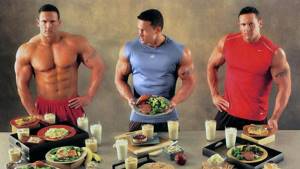
Friday
- 7.00 Omelet with vegetables, creamy mushroom sauce, cottage cheese (340g, 565 kcal B-50.8g, F-29.3g, U-19.4g)
- 11.00 Salad with squid, vegetables. Curd casserole (300g, 520 kcal B-43g, Zh-24g, U-28g)
- 14.00 Grilled chicken breast with buckwheat, green beans (290g, 539 kcal B-30.4g, F-28g, U-41.4g)
- 17.00 Broccoli salad with vegetables and cottage cheese casserole, hazelnuts (320g, 507 kcal B-26.4g, F-32.1g, U-32.4g)
- 20.00 Salad with seafood and vegetables (150g, 298 kcal B-12g, Zh-22g, U-10g)
Saturday
- 7.00 Omelet with chicken and tomato with creamy tomato sauce, cottage cheese (340g, 514 kcal B-38.4g, F-30.6g, U-18.7g).
- 11.00 Vegetable salad with turkey, creamy mustard sauce, cottage cheese with strawberries (320g, 550 kcal B-36.6g, F-31.5g, U-28.3g).
- 14.00 Lasagna Bolognese (260g, 541 kcal B-23.3g, F-32.4g, U-32.7g).
- 17.00 Vitamin salad with pumpkin seeds, banana-oat muffins with strawberry jam (370g, 496 kcal B-6.5g, F-24.7g, U-61.8g).
- 20.00 Salad of fresh cucumbers, red onions with olive oil (140g, 319 kcal B-1.2g, Zh-33g, U-2.2g).
Sunday
- 7.00 Oatmeal porridge with dried fruits and dried apricots, prunes, almonds, walnuts (330g, 544 kcal B-13.5g, F-26.4g, U-77.7g).
- 11.00 Greek salad with Feta cheese, cottage cheese casserole with raisins, walnuts (300g, 572 kcal B-24g, F-36g, U-38g).
- 14.00 Steamed beef cutlets with baked potatoes and creamy mushroom sauce (290g, 556 kcal B-45.9g, F-21.8g, U-43.7g).
- 17.00 Pumpkin pancakes with apple sauce (240g, 500 kcal B-7.4g, F-22.4g, U-67.4g).
- 20.00 Chicken zrazy with mozzarella, buckwheat and broccoli (250g, 363 kcal B-34.3g, F-10.6g, U-32.6g).
Zhirov
With proper and separate nutrition, you should not be too afraid of fatty foods if you follow the daily intake of fats (about 1 g per kg of weight) - in this case they will not begin to transform into deposits. On the contrary, fats can have a positive effect on muscle growth
For testosterone production, it is important that triglyceride intake is at least 15% of the total daily diet. Fats are:
- Healthy (monounsaturated and polyunsaturated. The former include olives, avocado, chicken, vegetable fats in the form of olive and peanut oil - sources of healthy Omega-9 fatty acids. The latter (Omega-3.6) include sunflower, soybean, flaxseed, rapeseed, cottonseed oil, fish oil, seeds, nuts.
- Harmful (saturated). Such triglycerides are found in palm, coconut, butter and cocoa butter, red meat, lard, and various confectionery products.
Sports nutrition and natural food during weight gain (muscle) exclude the consumption of harmful fats. This is due to the fact that the molecules of harmful triglycerides contain “bad” cholesterol and are saturated with hydrogen - all this can cause obesity, diabetes, and heart disease. It is allowed to include in the diet such sources of healthy fats as vegetable oils (mentioned above), nuts, and fatty fish.

Products: the best
To gain weight, your diet must include low-fat cottage cheese. It is a protein source that is recognized as one of the most beneficial for human muscles. Cottage cheese supplies us with vitamin PP, various vitamins from group B, and ascorbic acid. When it is consumed, hemoglobin levels become higher and the nervous system works more efficiently. Cottage cheese is good for bones and reduces the risk of atherosclerosis and excess weight.
Eggs are no less useful. They also supply our body with protein, and in addition to it they contain phosphorus and iron, many vitamins and lipids necessary for the body. This set of nutrients helps muscle tissue recover as quickly as possible. Scientists believe that eating eggs stimulates protein synthesis.
The third place in the diet is given to chicken meat, which is necessarily included in any thematic sports food set. Meals for weight gain should include many sources of protein that is easily digestible by our body - this is what poultry is rich in. Chicken also contains amino acids, minerals and vitamins. The fillet is enriched with magnesium, which relieves fatigue and stimulates the nervous system. Low-calorie chicken fillet. This fact is taken into account when choosing what to supplement the product with.
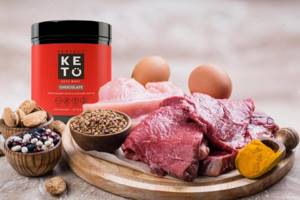
Nutrition menu for weight gain
An approximate menu for 3000 Kcal could be like this:
Option 1
Breakfast:
- Oatmeal with milk – 100 g dry
- Milk (1.5%) – 200 ml
- Boiled eggs (2 whites + 1 whole) – 3 pcs.
- Whole grain toast
Lunch:
- Banana – 1 piece
- Bun with poppy seeds – 1 piece
Dinner :
- White rice – 100 g dry
- Chicken breast – 1/2 pcs
- Seasonal vegetables – 100 g
- Whole grain bread (1 piece)
Afternoon snack:
- Rice - 100 gr
- Chicken breast - 1/2 pcs
- Seasonal vegetables - 100 g
Dinner:
- Pollock – 200 gr
- Potatoes – 150 gr
- Vegetable salad with sour cream – 150 g
Last meal:
- Low-fat cottage cheese – 150 g
- Kefir 1% – 150 ml
Option 2
Breakfast:
- Buckwheat porridge – 100 g dry
- Omelette of 1 egg and 2 whites
- Milk (1.5%) – 50 ml
- Whole grain toast
- Hard cheese – 30 g
Lunch:
- Apple – 1 pc.
- Dried apricots – 100 gr
Dinner:
- Wheat porridge – 100 g dry
- Turkey fillet 200 gr
- Vinaigrette – 100 gr
- Cereal bread (1 piece)
Afternoon snack:
- Wheat porridge – 100 g
- Turkey fillet – 200 gr
- Vinaigrette – 100 gr
Dinner:
- Hake – 200 gr
- Green beans – 100 gr
- Vegetable salad with sour cream – 150 g
- Last meal:
- Low-fat cottage cheese – 150 g
Option 3
Breakfast:
- Corn porridge with milk – 100 g dry
- Milk (1.5%) – 200 ml
- Fried egg made from 1 egg and 2 whites
- Whole grain toast
- Butter – 1 tsp.
Lunch:
- Pear - 1 piece
- Nuts (walnuts, peanuts, almonds) – 30 g
- Marshmallow (marmalade) – 100 g
Dinner:
- Pearl barley porridge – 100 g dry
- Beef goulash – 200 gr
- Vegetable salad – 150 gr
- Rye bread (1 piece)
Afternoon snack:
- Pearl barley porridge – 100 g
- Beef goulash – 200 gr
- Vegetable salad – 150 gr
Dinner:
- Chicken breast – 1/2 pcs
- Canned vegetables – 150 gr
- Rice – 100 g
Last meal:
- Low-fat cottage cheese -150 gr
- Ryazhenka – 1 glass
This is a sample menu from which you can build your own. The main thing is to adhere to the norm of proteins, fats and carbohydrates, and observe calorie content. You should not overeat, as the gain of fat mass increases, which grows with mass gain. The last meal is casein, a long-lasting protein. It is found mainly in cottage cheese and will help nourish muscles during sleep.
How it works?
A protein diet for gaining muscle mass works by consuming large amounts of protein, compared to carbohydrates and especially fats. Lack of protein in the body leads to depletion of muscle fibers, and in more severe forms – to dystrophy.
By consuming foods high in this substance before training, you can achieve muscle growth. Athletes whose goal is to build huge muscle mass consume protein from the sports nutrition series. Although most scientists repeatedly say that protein powder is very harmful to health.
However, a protein diet does not involve eating only protein foods. Fats and carbohydrates are also necessary, but in smaller quantities.
A protein diet should be accompanied by exercise. This is the only way muscle mass will begin to grow. There are several basic rules regarding physical activity:
- Fans of cardio exercises should know that exercises in this category increase muscle endurance, but do not affect their growth in any way.
- Fitness training done in groups, as well as stretching, Pilates, yoga, etc. will not increase muscle volume.
- Light weights (dumbbells, barbells, etc.) will not lead to the desired result.
- But strength exercises that involve several muscle groups are what leads to muscle growth. And sports trainers and equipment must have weights of such weight that more than 7-10 repetitions are practically insurmountable.
Training should be carried out 3-4 times a week. Rest is necessary, since 48 hours are allotted for recovery and growth. In between workouts, protein nutrition and rest should be practiced.
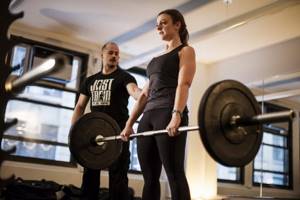
How to eat to gain muscle mass
It is important not to skip meals and not to fast for more than 3 hours. The ideal nutrition option for a man to gain muscle mass would be to eat according to the clock, so the body will quickly adapt to the system and itself will give a signal that it is time to eat.
On average, the body's adjustment to a new regime takes about 3-4 weeks.
Another secret to maintaining a routine is planning your meals in advance. At first you will have to weigh everything and keep a food diary, but over time this will no longer be necessary. There are special services for this on the Internet, or you can install applications on your phone.
For those who have not exercised before and have decided to gain weight, increasing physical activity within reasonable limits has a beneficial effect on appetite and nutrient absorption. Therefore, to accelerate weight gain, you need to use the muscles of the body. A set of exercises for boys and girls at home and in the gym. And for those who are especially thin, it’s worth reading this article.
When starting the period of weight gain, a list of necessary products is compiled and purchased for the first week. It’s better to create a menu and prepare food for the whole day at once; this will help you distribute food correctly, so that you don’t add calories at the last moment with anything.
The time to gain weight takes different amounts of time for everyone, so you should clearly define the result. It is better to increase the calorie content and volume of food gradually, this way you can avoid discomfort and confidently move towards your goal. There is no need to rush in this matter, as they say, “the slower you go, the further you will go.” Listen to your body and you will soon see positive changes.
About the nuances
The described diet options for gaining muscle mass are just examples. You can create your own menu, based on your preferences in tastes and products. The basic rule is to maintain the ratio of nutrients in the food consumed, and also monitor the caloric content of the diet. Overeating is strictly prohibited, as it leads to excess fatty tissue in the body. In any case, weight gain is accompanied by an increase in a certain amount of fiber, so it is important to monitor the process. The last evening meal provides a person with casein, a protein that takes a relatively long time to be processed by the body. Cottage cheese is rich in it. Casein is useful for muscles during sleep as a source of energy.
A very important rule for eating for weight is to clearly track your schedule and eat on time. You cannot fast for three hours or more. It is advisable to eat strictly according to the clock. This will help the body quickly switch to a new regime and adapt. The body itself will signal the need for another meal. Typically the rebuild takes three to four weeks. It's easier to stick to a routine if you plan everything in advance. At first, they show special discipline, weighing all portions and keeping a diary in which they write down everything they eat. As weeks and months pass, all this will become automatic, and the need for a diary and scales will disappear.
Prohibited Products
There are also foods that should never be consumed on a regular basis if a person wants to build muscle mass.
Sugar
It reduces anabolic potential and reduces insulin sensitivity. It cannot be consumed in its pure form. But you will have to give up both soda and sweets.
In the latter case, you can replace them with desserts prepared at home without sugar, but also using fruits or natural sweeteners.
Fast carbohydrates
This is chocolate, caramel, any desserts. If an athlete is afraid that he will not have enough strength for training, it is better to take gainers instead of carbohydrates.
Any canned food and semi-finished products
In addition to a large amount of fat, they contain preservatives and other additives.
Saturated fats are important, but should be consumed in limited quantities. This means that butter in the diet is kept to a minimum.
Products and their benefits
Athletes can eat whole grain bread. It provides slowly digestible carbohydrates, a good source of energy that helps keep your reserves in balance.
Ricotta is another indispensable product for an athlete’s diet. Cheese is rich in albumin and casein. According to trainers, constant consumption of this cheese accelerates the increase in muscle mass. Nutritionists specializing in the intricacies of nutrition for gaining muscle mass assure that ricotta improves endurance and strengthens bones.
It is useful to drink cherry juice. It contains antioxidants. The product fights inflammation, stimulates regenerative processes and improves the performance of the body as a whole. There have been studies showing that it stabilizes blood pressure after exercise.
It wouldn’t hurt to include quinoa in your diet to gain weight. This is a grain crop enriched with protein and fiber. It provides the body with amino acids and vitamins - primarily group B. Research conducted in America proves that quinoa protein is very similar to milk protein. Due to its chemical composition, quinoa grain is useful for athletes and has practically no analogues. The only really good alternative is buckwheat.
Nutrition for men weighing 80 kg: sample menu
The 80kg Men's Diet is an eating plan for building muscle, but not for gaining weight. That is, protein intake is ensured and the number of calories is reduced.
A sample menu for the week looks like this:
| Day | Diet |
| First |
|
| Second |
|
| Third |
|
The fourth day is considered a rest, you can eat as you wish, you need to exclude fatty and smoked foods, and baked goods. Then, until the end of the week, repeat the first three days in the same sequence.
This diet can be followed for a whole month. It is not harmful to health, helps get rid of fat accumulation and improve metabolism.
What sports supplements should you use?
In bodybuilding, sports nutrition is actively used, allowing you to quickly achieve your goals. The diet I have given is combined with sports supplements, although they are not a mandatory component.
Protein-carbohydrate mixtures (gainers) should be taken an hour and a half before training. You should also consume whey isolate after finishing exercise. Athletes often use BCCA amino acids.
Although the proposed diet contains a lot of healthy foods (including greens, fruits), the body will most likely experience a deficiency of vitamins. A vitamin-mineral complex will help compensate for their deficiency.
It is advisable to take creatine after completing a workout, mixing it with juice, protein or gainer.
Protein
Although there is no shortage of proteins on the menu, since protein is the main building material, it is better to ensure that the body always receives it in a timely manner. Protein shakes will help cope with this task. Cocktails can be drunk twice a day in between meals. However, they are not mandatory provided that the athlete uses isolate after training.
How to quickly gain muscle mass as a mesomorph
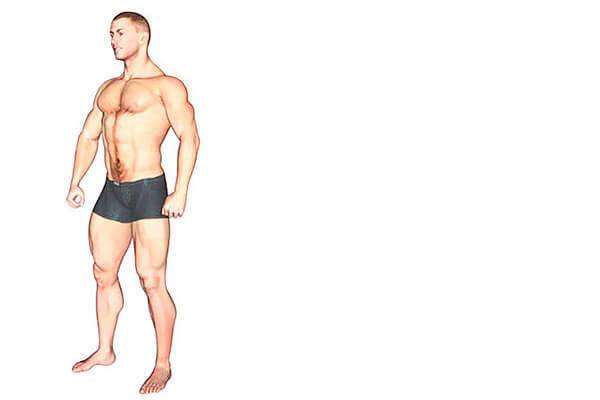
This type is able to quickly and efficiently gain muscle mass, and it is easier for him to lose fat than others. A good metabolism allows you to adhere to the basic principles of weight gain - high-calorie nutrition and intense strength training. Mesomorphs have larger bones and larger muscles, which will be athletic if their body fat percentage is very low. Muscles will increase especially noticeably if your workouts include lifting heavy weights. Thus, the result is a muscular male body with bulging veins and muscles. A mesomorph man, in addition to muscle mass, is able to gain a small amount of fat, but can just as easily lose it. The fast-growing muscle fibers of a mesomorph are able to grow much faster with the help of strength training. Unlike ectomorphs, who have difficulty gaining muscle, mesomorphs gain weight with great ease.
- If a mesomorph has set a goal to lose weight and reduce volume by reducing adipose tissue, then you should focus on diet and endurance training.
- If the goal is achieved, you can return to strength loads of 8-12 repetitions per set, and continue to gain muscle mass.
Nutrition and drink after training: nuances
If the lesson was in the morning, it is advisable to eat high-calorie food after it, because you need to gain energy for the coming day. In the evening, especially shortly before bed, it is better to eat only protein. If the load is very heavy, proper nutrition for weight gain includes small amounts of slowly digestible carbohydrates. It’s best to eat fats (on average) five hours after exercise. These nutrients slow down the absorption of carbohydrates and proteins.
It is very important for an athlete to drink correctly. It is useful to drink non-carbonated mineral water and unsweetened green tea. You can squeeze juices and consume them immediately, you can cook compotes, choosing unsweetened varieties of fruit for this. An athlete should drink throughout the day, especially a lot immediately after exercise. This is the only way to prevent dehydration. The volumes required by the body are individual, so you should pay attention to thirst.
Basics
First, your refrigerator...
You need to fill it with a whole range of different healthy products, with which you will prepare meals for rapid muscle growth. And also prevent snacking on useless foods, which should be limited, because not everyone needs the nutrition of an ectomorph, which must increase the caloric content of the diet by any means. Here is a sample list of what foods to eat:
- Carbohydrates: Quinoa, sweet potatoes, white potatoes, brown rice, whole grain pasta.
- Protein: Chicken breast, protein powder, eggs, egg whites, fish, Greek yogurt.
- Fruits and vegetables: Berries, bananas, tropical fruits, various greens, legumes, avocados.
- Oils: Use a spray, teaspoons instead of tablespoons - coconut and olive oil.
- Snacks: Seeds and nuts.
5 important tips
- Eat regularly
Don't let your body go into starvation mode. When you're hungry, you're likely to snack on empty foods. By eating consistently, you maintain your blood sugar levels and metabolism.
- Limit your consumption of processed foods
Processed foods tend to be high in calories and low in nutrients, so try to avoid them.
- Be a fish out of water
Hydration is important. If you drink enough fluid, your performance and studies will improve, and the feeling of hunger may even dull.
- What to do with carbohydrates?
Carbohydrates are not your enemy, but it is better to plan their consumption. For example, simple carbohydrates are great to take before or after a workout because of the rapid release of energy as well as the restoration of glycogen stores. Complex carbohydrates can be consumed at any time because they do not cause spikes in blood sugar.
- Pure Protein
Not only does protein help your muscles grow and repair, but it's also great for keeping you full and speeding up your metabolism. The best sources of protein are low-fat beef, chicken, turkey, fish and skim milk. Protein shakes are perfect for quickly replenishing protein reserves.
Despite all the existing myths, the diet for gaining muscle is quite simple. And it doesn’t require you to eat chicken breast, broccoli and brown rice with buckwheat every day.
But - there are factors that you need to consider in nutrition: these are your daily calorie intake, the amount of protein, carbohydrates and fats consumed. Let's dive deeper into the theory before we look at a sample meal plan for building muscle.
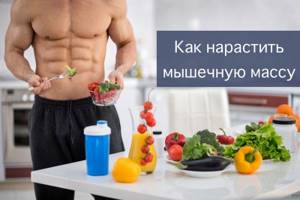
What to eat before and after training
There is no consensus on how many hours before training you should eat. Heaviness in the stomach will obviously not contribute to the exercise, but during the digestion process the body receives energy in a fairly short period. It is best to eat one and a half to two hours before training.
The period after a workout is considered the most successful time for consuming food, since the body actively requires calories and almost immediately releases nutrients for muscle recovery and growth.

Immediately after finishing your workout, you can eat two bananas. After 40-60 minutes you should eat normally. The menu should be dominated by proteins and slow carbohydrates.
Bodybuilder menu[edit | edit code]
https://youtube.com/watch?v=zcxj4VOUsBM%3F
Budget diet for weight gain
https://youtube.com/watch?v=RDC4Yq1qMmg%3F
Budget gain of muscle mass (Denis Gusev)
Many bodybuilders are faced with the problem of choosing foods, so we consider it necessary to list those foods that can be used to form a complete diet for gaining muscle mass. Most products contain protein, fats, and carbohydrates, so the division is made conditionally, only to add emphasis. Do not eat the same product in large quantities for a long time, otherwise after a while you will develop an aversion to it. Try to constantly alternate products and update your menu.
Protein productsedit | edit code
In fact, there are not so many foods rich in protein. We list the most popular and accessible ones, in order of their value for the athlete:
1. Meat
- any, low-fat.
Poultry meat is preferable because it contains virtually no fat and is easily digestible. 2. Fish and other seafood
.
You can also eat any fish, including fatty fish, at least 2-3 times a week. 3. Dairy products.
Give preference to low-fat products.
The most popular are cottage cheese, cheese, kefir, milk, yogurt, etc. 4. Eggs.
You can eat 6–8 eggs a day, including the yolks.
It has been scientifically proven that if you do not have high blood cholesterol, then eggs will not affect your level in the future. 5. Legumes.
Beans, legumes, peas, mung beans, and lentils are the most important plant sources of protein, although its value is lower than that of other products.
Lentils and chickpeas additionally contain significant amounts of BCAAs. Soy is specifically not included in this list because soy products today are often genetically modified, and men are not recommended to consume soy due to its hormonal activity. 6. Nuts
- contain not only protein, but also valuable unsaturated fatty acids
Carbohydrate productsedit | edit code
1. Cereals.
- Porridge. Porridges contain slowly digestible carbohydrates, protein, as well as microelements and vitamins. The healthiest porridges are: buckwheat, barley (pearl barley), oatmeal, rice, millet, corn, wheat, quinoa.
- Pasta and noodles. Give preference to products made from wholemeal flour and durum wheat.
- Bread. Consume mostly black bread.
- Cereals and muesli provide good variety for an athlete's menu.
2. Vegetables and mushrooms.
You should limit all starchy vegetables, such as potatoes, boiled or stewed carrots and beets. Fresh vegetables are considered the most useful, as they contain the maximum amount of vitamins. Vegetables should be combined with almost every protein meal, because they promote the digestion and absorption of animal protein, are a source of fiber necessary for digestion, and contain a large amount of vitamins, macro- and microelements. Mushrooms add aroma and taste to dishes, but they do not provide nutritional, much less protein, value due to the fact that mushroom protein is not absorbed by the human body.
3. Fruits and greens.
Extremely healthy products containing many vitamins and minerals. However, sweet fruits (grapes, pears, ripe bananas, persimmons) contain a lot of simple sugars, so their consumption should be limited.
Let's start from the very beginning
The first point in determining individual needs and drawing up a proper diet for gaining muscle mass is identifying how high-calorie foods you receive per day should be. There are various automated calculators, but those who like to delve into it can be recommended to use formulas for independent calculations. Basal metabolism is easy to calculate. There is a Saint-Geor formula for this. For men, you need to multiply the weight by 10, the height value in centimeters - by 6.25. The resulting numbers are added and subtracted by five times the number of years lived. Five are added to the total. The result is the number of calories a person needs per day. For girls, they use exactly the same formula, only they don’t add five units at the end. So, let’s imagine that a 25-year-old man, whose height and weight are 170 and 75, plans to gain weight. He should receive calories per day:
10*75+6,25*170-5*25+5=1692,5
This amount is necessary for the normal functioning of the body. If there is physical activity, the formula is supplemented with coefficients. For a sedentary lifestyle, multiply the result by 1.2; with light activity and three workouts per week – by 1.25. If a person exercises up to five times a week, the coefficient is 1.55. With seven workouts per week – 1.725. If someone exercises several times a day or does heavy physical work, the daily calorie intake is increased by 1.9 times. If the goal is to quickly increase weight, while the muscles grow well, the calorie content is increased by 15%. If gains are difficult, calorie content is increased by 20%.
